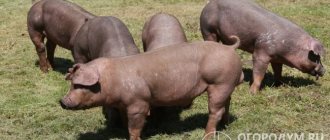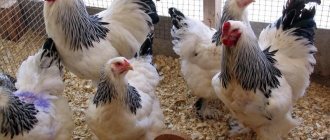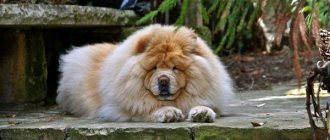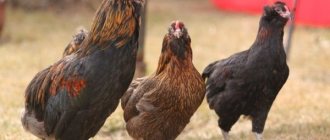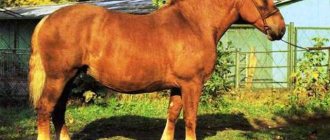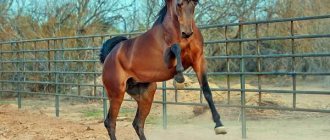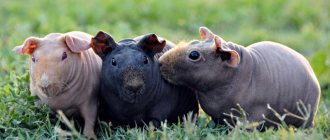Just two centuries ago, agricultural work could not do without horses. They were used for plowing fields and transporting goods. Driving breeds did not cope well with this task, so heavy draft horses were bought in Europe.
They did not adapt well to the harsh climate and could not get used to low-quality food. However, it was they who gave rise to a unique Russian breed - the Vladimir draft horse, which combines all the best qualities inherent in draft animals. You may also be interested in information about what the Russian riding horse breed looks like in the photo.
The history of the origin of the Vladimir heavy truck
The Vladimir region has always been famous for its hardy and strong horses, which supplied animals to large cities. And it was in this area, in Gavrilov Posad, that there was a stud farm where breeders set out to create a locally produced heavy draft breed.
Since there were no individuals of this category, we had to purchase future parents abroad. Percherons were brought from France, Suffolian horses were brought from England, and Arden horses were supplied from Belgium. Later, Clydesdales and Shires from England imported from Scotland began to be actively used in selection work.
The specialists were faced with the task of breeding a powerful and beautiful breed; the genes had to be passed on from imported parents, but on the other hand, the new representatives had to be strong, hardy and easily adapt to various conditions.
Only in 1936, when they began to systematically study various crossbreeds, the Vladimir heavy truck was identified. It took another 10 years to bring it to fruition and officially register it as a new breed. So, in 1946, the Vladimir heavy truck appeared on the register.
Peculiarities
The time of year and the vagaries of the weather do not in any way affect the attitude of “Vladimirets” to work. He will be equally diligent in the snow, in the rain, and in the hot afternoon.
This unique type of horse is naturally used for selection, as a result of which the Vladimir draft horse became the progenitor of other breeds of draft horses. He passed on to them his best qualities - enormous height with a mountain of muscles, tirelessness and diligence in work, great physical strength along with energy. Breeders are thinking about breeding on the basis of the Vladimir - an ideal horse that would embody the best of all breeds of purebred horses.
Nowadays, the physical and psychological characteristics of “Vladimirets” attract this horse to a wide variety of fields of activity. Strength, confidence, and agility allow it to be used even in hunting.
Characteristic
This is one of the largest heavy trucks in Russia. When you first meet him, you are struck by his size. The height of a horse can reach 175 cm - this is the height at the withers, and the maximum weight reaches 1200 kg. Males are larger than females. A stallion weighs on average about 760 kg, and his chest girth is 207 cm. The mare, accordingly, weighs about 690 kg, and his chest girth does not reach 2 meters and is 196 cm.
The metacarpus for a heavy draft horse is quite long, it can reach 30 cm, with a girth of 23.5 cm. Experienced horse breeders judge the development of the skeleton and the strength of the constitution by the thickness of the metacarpus.
If we talk about color, then the lion's share falls on bay and red horses; black and brown horses are less common.
Appearance
This giant is difficult to confuse with other breeds. A tall, stocky handsome man with a thick mane and tail immediately attracts your attention.
The head of the animal is large, the skull is massive; if you look at its profile, the hooked nose will be noticeable. Long, full neck with a pronounced nape, strong and oblique shoulder blade. Wide chest. The animal's shoulders are muscular, the back is long and wide, the croup is the back of the body, slightly lowered down. The hooves are wide, the horn is hard and durable.
The lower part of the legs is “dressed” in white “socks” with lush hair. The fur is very thick, short, and gives the animal a resemblance to a huge plush toy. White spots can often be seen on the animal's head and belly.
Advantages of the breed
Among the main advantages of the breed are:
- Versatility - horses are used not only for their intended purpose - dragging heavy loads, working on the ground, but thanks to their grace, they are perfect for horse riding and sports competitions.
- They are characterized by maximum endurance and strength.
- The working experience of horses is 20 years or more.
- The performance of animals does not depend on adverse weather conditions, and its indicator is very high. It will work in hot weather, in rainfall, and in cold weather.
- Complaisant and calm disposition, quickly adapts to work and a new place of residence.
- Early puberty, greater fertility.
- This is a prestigious and valuable breed for breeding - it is suitable for breeders, since on its basis it is possible to develop new breeds that will be in demand among horse breeders.
Character
Using the example of the Vladimir breed of horse, we can say that one should not judge its character by its appearance. An impressive and menacing appearance in no way reflects the calm, docile nature of both mares and geldings. Usually there are no difficulties either in communicating with the owner or in harnessing, except in cases of mistreatment of the horse by a person.
A big advantage of the horse breed is its rapid adaptation to the living environment and working conditions. Due to the energetic nature of the breed, young animals can sometimes show tempers without listening to the owner, but a kind attitude and affection will improve matters. Having made friends, the horse will prove itself to be a kind and devoted worker.
Flexible character
Flaws
The Vladimir heavy truck also has disadvantages, but they are much smaller:
- The long and soft back, coupled with flat ribs, is inferior in physical condition to the Suffolian representatives. It seemed that these “disadvantages” of the structure made the horse clumsy and did not allow it to run away, but in practice the opposite has been proven; a horse with a load of 1500 kg covers a distance of 2 km in 5 minutes.
- Low speed of movement due to its heavy weight, when compared with other heavy draft breeds.
Photo gallery
Photo 1. Heavy truck with a beautiful mane
Photo 2. Running Vladimir heavy truck and dog
Photo 3. A rider riding a Vladimir heavy truck
Content
One of the reasons why the Russian Empire needed to breed its own heavy trucks, rather than purchase imported horses, was the need to adapt the horses to minimal simple conditions and low-quality feed. Which is what was done. However, for the Vladimir heavy truck, it is still worth observing a balanced composition and nutritional standards and providing more or less comfortable housing so that the animal remains healthy and maintains a “working” shape.
Horses can live in a stall - an isolated room or stall. When keeping an animal in a stall, it may suffer without communication with other brothers. As a result, the horse becomes aggressive and refuses to eat.
There are no problems with communication in the stall, but cleaning and winter maintenance are difficult. At low temperatures, stall ventilation is limited, so in cold times horses are often susceptible to diseases associated with stagnant air. In addition, a sick horse can become a source of spread of the disease and infect other animals. In order to reduce the likelihood of illness, the room must be disinfected weekly.
Whatever type of housing you choose, the ceiling height should be 3 meters - this allows for better air ventilation. Ventilation in the stable is necessary, but it should not create drafts. The best option would be to install vents under the roof.
The stable should be illuminated by sunlight most of the day; darkness has a negative effect on the horse's vision. The windows are made large so that a large amount of light penetrates into the room.
The floor is made of wood or concrete. The last option is more durable; drainage ditches are made in it to drain excess liquid. Sawdust or straw is used for flooring.
In winter, the temperature in the stable is maintained at +8...+11 °C, the minimum temperature is 3 °C. It is not advisable to raise it higher, since a sharp difference in temperature outside and in the stable leads to illness in animals. In the warm season, the room is ventilated and regularly cleaned of manure. In hot weather, the windows are covered with fabric to curb the temperature rise; overheating is very dangerous for horses.
Care and feeding
The appearance of a Vladimir heavy truck in the stable will not require any additional costs, both physically and financially. Like any horse, he requires regular daily care:
- A heavy truck is designed for hard work, so it must have physical activity in its regime. If the animal is used for its intended purpose, then examinations by a veterinarian should become regular, at least 5 times a year. A walk in the fresh air is also a must in care.
- At the end of the day, in warm weather, the horse is bathed and doused with warm water from a bucket or hose. During the cold period, only dry cleaning is allowed; water procedures are taboo.
- The tail and mane are combed daily with a plastic comb so that the hair does not get too tangled; they are treated with special sprays.
- Hoof care is required. They need to be cleaned and checked regularly for cracks, injuries and dermatitis. If any damage is detected, promptly contact a veterinarian and begin treatment.
- Dental examination is an equally important procedure. Oral diseases greatly affect the overall well-being of the animal.
- The horse's diet should be balanced, complete and varied. They are fed 3 times a day. A horse that works all day is fed every 2 hours. Grass and hay are a given, but a draft horse requires a lot of energy for physical work. Its supplier is grain, but it is also impossible to feed it, as the animal will develop stomach problems. The vitamin intake is also increased compared to other breeds. To replenish vitamins and minerals in the animal’s body, it is given fresh vegetables and fruits. Salt is an important product that is given to each individual daily.
- The animal should have free access to hay and water. A horse drinks 80 liters of clean water per day. In winter, when the diet consists mainly of dry food, the volume of liquid consumed increases.
- Since the animal constantly secretes gastric juice, it must constantly chew something. Hay must be constantly present in the feeder, otherwise serious problems with the digestive system may occur.
Characteristic signs
External characteristics and a description of the exterior will help you understand how valuable Vladimir heavy trucks are considered.
Note: It is worth noting that for breeders, not only the appearance of animals plays an important role, but also their character, which directly affects the interaction between humans and animals.
First, let's look at the external features of the breed. Both males and females of the Vladimir draft horse are quite large: about 167 cm at the withers, about 700 kg in weight and with a chest width of about 2 meters. The legs and head are powerful, strong and give a clear idea of the horse’s strength. Impressive growth is compensated by correctly positioned and strong limbs. The tail and mane are thick and long, although the rest of the coat is short (Figure 3).
Figure 3. Animals are distinguished by their impressive size and thick fur.
The character of heavy trucks deserves special attention. These are very energetic animals, which, however, have a very friendly disposition. They are equally productive and calm in big cities and small villages. Moreover, animals absolutely always behave calmly and balanced, even if other horses show interest in them.
Representatives of the Vladimir draft breed get along well with children, behave well when led and are never stubborn. Due to these character properties, they are often used for horseback riding.
Horses make excellent contact with people, so they can be easily trained to do any work. Moreover, due to their natural strength and endurance, they can perform almost any task.
Prospects for breeding the Vladimir breed
The time of heavy trucks has passed, cars have replaced horses, and in villages rarely does anyone keep this giant for work. Today, the population of the breed is significantly declining and we can talk about the threat of extinction of this handsome animal. Although breeders are still working with it, the breeding stock does not even number hundreds of heads.
But the prospects for the Vladimir heavy truck still have good prospects. Magnificent appearance, calm and easy-going disposition is suitable for tourism, equestrian competitions and sport hunting.
There is supply and demand for this breed. The price for a stallion can reach up to 500 thousand rubles. On average, the cost ranges from 200 to 250 thousand rubles for a one-year-old stallion. The price depends on the region of origin, pedigree, age, gender, vaccination of the animal. A Vladimir draft stallion usually costs more than a mare.
Field of activity
Originally bred as a strong peasant horse - a kind of “living tractor”, now the Vladimir horses are not used for plowing the land. Beautiful and strong, active animals have found application:
- in equestrian tourism (they ride people under saddle and in harness);
- in mounted police;
- in horse hunting;
- to improve the beef stock of horses (by increasing the live weight of foals and slaughter yield).
The appearance of the Vladimir horse is associated with Russian epics about glorious heroes. This is exactly what a real heroic horse looks like - big and strong, with a long lush mane. These associations are used to attract tourists. In richly decorated harnesses, the animals give rides to children and adults.
The Vladimir breed of heavy draft horses, despite its active use in equestrian tourism, is going through hard times. The number of purebred individuals is declining. The domestic variety of “heroic horses” can be saved by the popularization of sports competitions among heavy draft breeds.
Interesting facts about the horse
True horse connoisseurs will be interested in learning a few interesting facts about this breed:
- the ancestors of the heavy truck are knightly horses, images of which can still be found in medieval paintings;
- the largest heavy truck was a horse named Mammoth, his height was more than 2 meters, and he weighed 1.5 tons;
- these large animals can take on low obstacles and jump over small barriers;
- a stable nervous system allows the horse to work in any noise, roar and scream;
- The endurance of Vladimir heavy trucks has been proven; they were used to travel from Vladivostok to Moscow.
So, the Vladimir Heavy Truck is a unique breed that combines power and grace, energy and calmness, and its colorful exterior captivates at first sight. He does not require any special care and becomes a loyal friend to the owner.
0
0
Copy link
Under what conditions are they kept?
The Vladimir giants are quite demanding; in order to raise an animal that is hardy and profitable in terms of fertility, you need to spend labor, although there are no easy subsections in agriculture, especially animal husbandry.
Maintenance of heavy trucks
Horse breeders recommend:
- It is necessary to take proper muscular work seriously, not to let the stallion stagnate; for this he should not be indoors, but in the walking yard for walks and jogs.
- Hygiene for a mare is a fundamental condition for a healthy body, its beauty and longevity. Horses will need to be cleaned with special means, select tools, brushes, scrapers, shampoos. Winter souls must be excluded so as not to kill the horse through careless action or a cold.
- You should take into account an abundant nutritional diet, since the more powerful the animal, the more food the body requires, especially if you have to spend a lot of energy, they need to be restored.
You will definitely need to arrange regular veterinary examinations. The environment is so unstable; infectious outbreaks arise every year in areas where animals gather; it is possible to prevent their spread through preventive measures. Examine the condition of the nose, remove any accumulation of fluid, wipe the skin from sweat, after work, with dry rags.
Crossbreeding is carried out only after final maturation, so the young are kept separately from the adults who have gone on a spree. If the farm is aimed at breeding a purebred breed, pairs are selected that are worthy of origin, and a documented pedigree is maintained for each horse. Stallions grow quickly and gain weight; one-year-old stallions look like adults, but they can bear full offspring after three years of life.
